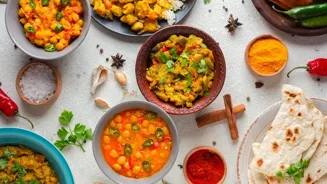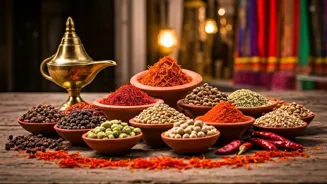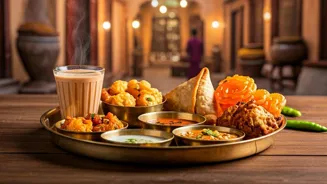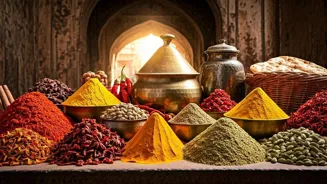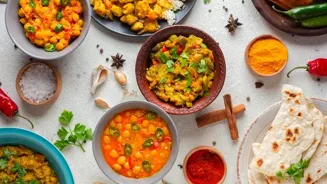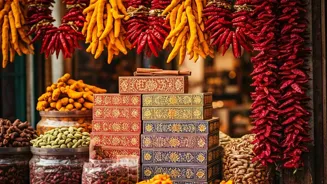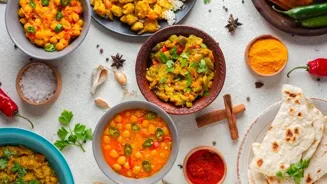Unveiling the Flavors of Indian Street Food: A Journey Through Time. Dive into the rich culinary tapestry of India's vibrant past and present. Discover the origins, influences, and regional delights that
make Indian street food a cultural phenomenon. Embark on a delicious adventure through the ages
India, a land known for its vibrant culture and diverse traditions, boasts a culinary heritage that is just as colourful. And at the heart of this culinary tapestry lies Indian street food, a symphony of flavours, aromas, and textures that has evolved over centuries.
From ancient marketplaces to bustling modern streets, the story of Indian street food is a delicious journey through time, reflecting the country's rich history and cultural exchange.
Its origins are not just about sustenance; they tell tales of trade, royal kitchens influencing the masses, and the ingenuity of cooks adapting recipes to local ingredients and tastes. Exploring this history is like uncovering the secrets of India's soul, one delicious bite at a time.
Street food in ancient India evolved for quick, tasty meals on the go
Street food in India wasn't born overnight. It slowly developed as people needed quick, affordable meals. Think back to ancient India: bustling cities and trade routes meant people were always on the move. They needed something easy to eat while travelling or working.
Early forms of street food might have been simple grains, pulses, or roasted vegetables. These were easy to carry and didn't need much cooking. As trade with other countries grew, new ingredients like spices and different types of grains arrived in India.
These slowly influenced the preparation of street food, adding new dimensions of flavour and variety. The idea was to create dishes that were both filling and tasty, using whatever was locally available.
Indian cuisine transformed in Mughal era, from royal kitchens to streets, creating accessible dishes
During the Mughal era, Indian cuisine experienced a significant transformation. While elaborate dishes were created in royal kitchens, their influences gradually trickled down to the streets.
Imagine cooks inspired by the royal fare, adapting complex recipes to simpler, more accessible forms for the common people. Sweet treats like jalebi, although with its Persian roots, became very common.
The dishes were made with simple ingredients like wheat flour and sugar, creating a satisfying treat for the masses. This period also saw the introduction of new cooking techniques, such as deep-frying, which became essential to many street food items we enjoy today.
British era influences on Indian cuisine; street food evolves independently, embracing change
The British era brought further changes to the Indian culinary landscape. While some Indian dishes were adapted to suit British palates, street food continued to evolve independently, remaining true to its desi roots.
The potato, introduced by the Portuguese, quickly became a staple ingredient, finding its way into snacks like Aloo Tikki and samosas.
The rise of railways made it even easier for street vendors to travel and sell their goods, resulting in a more diverse range of food being available across the country.
This period solidified street food's position as an integral part of Indian culture, a testament to its ability to adapt and thrive amidst change.
Regional variations define Indian street food diversity; each region offers unique dishes
Regional variations are what truly make Indian street food so fascinating. Every region has its own unique dishes and styles of preparation, reflecting the local climate, agricultural produce, and cultural influences. South India, for instance, is famous for its dosas, idlis, and vadas.
North India is known for its chaats, parathas, and chole bhature, with each offering a distinct flavour profile. Eastern India boasts of delicacies like puchkas (similar to pani puri) and Kolkata rolls. Western India delights with vada pav, dabeli, and pav bhaji.
What’s even more fascinating is how these items are made with local twists.
Indian street food thrives as a vibrant, evolving tradition uniting people
Today, Indian street food continues to thrive. It is a vibrant part of the Indian experience. From small towns to big cities, you'll find street vendors serving up a dizzying array of tasty snacks and meals. It is a constantly evolving tradition.
Cooks experiment with new ingredients and techniques, making sure that street food stays relevant and appealing to the younger generations. This is a food tradition that brings people from all walks of life together, sharing a common love for delicious, affordable food.
It's a reminder that the best culinary experiences are often found not in fancy restaurants, but on the bustling streets of India.
AI Generated Content. Glance/InMobi shall have no liability for the content